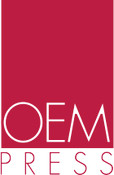Doody's Book Reviewer rated this book with a score of 94 out of 100: "For individuals tasked with the challenge of devising health and safety plans, this is a needed resource."
Occupational Health for Higher Education and Research Institutions: A Guide for Employee Health and Student Health Programs provides a comprehensive overview of unique occupational health challenges encountered in these institutions and how to manage them. While the organizations are extremely diverse, ranging from small colleges to large research universities, they also include technical schools, research institutes, and government agencies with extensive research activities. As such, the variety of hazards and the available preventive resources can vary widely and require understanding and collaboration among occupational medicine specialists, student health providers, and institutional health and safety officers, review committees, and administrators.
The book fills an important gap, emphasizing occupational health concerns such as evaluation and protection of research workers; recognizing and responding to biologic, chemical, and physical hazards; laboratory and large animal contact; fieldwork; legal and regulatory requirements; and other issues specific to the higher education and research industry.
- Informative Organizational Context subchapters to guide program directors and nonspecialist administrators in essential considerations for an occupational health and safety program
- Case studies demonstrating how technical knowledge may be applied to individual patients or specific types of programs, while pointing out pitfalls to be avoided
- Extensive, easy-to-use lists and tables of biologic agents, clinical manifestations, surveillance testing, vaccinations, and more
- Links to online resources to governmental and other sites for up-to-date information about hazards and their control
- An appendix of sample forms for use in occupational health programs
Contributors
Preface
I. Overview
1.Overview of the Higher Education and Research Industry
Philip Harber
2. Role of Clinical Programs
Philip Harber
Example: Organizational Reporting Structures
Philip Harber
3. Resources
Philip Harber
II. Hazards
4. Chemical Hazards
Beth Baker, Emily Bannister, Jeremy Biggs, J. Denise Clement, and Melanie Swift
Chemical Hazards--Organizational Context
Philip Harber, Beth Baker, and Mark Russi
Example: Hydrofluoric Acid
Beth Baker
5. Large Animals Roger Belcourt and Amy Behrman
Large Animals--Organizational Context
Philip Harber and Beth Baker
Example: Q Fever in an Animal Handler
Roger Belcourt and Amy Behrman
6. Laboratory Animals
Gregg M. Stave
Laboratory Animals--Organizational Context
Philip Harber and Beth Baker
Example: Lab Animal Allergy
Gregg M. Stave
7. Biologic Hazards--General Approach
T. Warner Hudson, Amy Behrman, Melanie Swift, and Tom Winters
Biologic Hazards--Organizational Context
Philip Harber
8. Biologic Agents
Melanie Swift, Amy Behrman, Philip Harber, Thomas Winters, and Gabriel Gaviola
Appendix 8-1. Bacteria, Rickettsia, and Biologic Toxins
Appendix 8-2. Viruses and Viral Vectors
Appendix 8-3. Fungi
Appendix 8-4. Parasites
9. Novel Biologic Agents
Thomas Winters and Glen Cheng
Novel Biologic Agents--Organizational Context
Philip Harber and Mark Russi
Example: Postexposure Prophylaxis for Biologic Agent Exposure (Nonhuman Primate and Lentivirus)
Melanie Swift and Denece Kesler
10. Biocontainment
Brian O'Shea and J. Denise Clement
Biocontainment--Organizational Context
Philip Harber
11. Infection Concerns Related to Public or Group Interactions
Mark Russi
Infection Concerns Related to Exposed Groups--Organizational Context
Philip Harber, Beth Baker, and Mark Russi
Example: Employee Concern after a New Student Case
Philip Harber
12. Physical Hazards
Philip Harber
Physical Agents--Organizational Context
Philip Harber and Beth Baker
III. Approaches
13. Clinical Evaluation Related to Exposures or Symptoms
Melanie Swift and Denece Kesler
Clinical Evaluation--Organizational Context
Philip Harber and Beth Baker
Example: Chemical Exposure with Symptoms
Melanie Swift and Denece Kesler
14. Fieldwork
Amy Behrman and Tom Winters
Fieldwork--Organizational Context
Philip Harber and Mark Russi
Example: Acute Febrile Illness after Fieldwork
Amy Behrman
15. Prevention Strategies
Judith Green-McKenzie
Prevention Strategies--Organizational Context
Philip Harber and Beth Baker
Example: Prevention Strategies for a Steamfitter
Judith Green-McKenzie
16. Travel Medicine: Pretravel Prevention
Jeremy Biggs
Travel Medicine: Pretravel Prevention--Organizational Context
Philip Harber and Mark Russi
17. Susceptible Workers
Denece Kesler and Amy Behrman
Susceptible Workers--Organizational Context
Philip Harber and Beth Baker
Example: Susceptible Workers
Denece Kesler
18. Legal and Regulatory Requirements, Guidelines, and Voluntary Accreditations
Gregg M. Stave
Legal and Regulatory Aspects--Organizational Context
Philip Harber and Beth Baker
19. Preparedness for Unanticipated Problems
Mark Russi
Preparedness for Unanticipated Problems--Organizational Context
Philip Harber, Beth Baker, and Mark Russi
20. Burnout in Healthcare and Other Settings: An Occupational Hazard
Judith Green-McKenzie and Brandon McKenzie
Example: Burnout
Judith Green-McKenzie and Brandon McKenzie
21. Work-related Stress
Philip Harber and Beth Baker
22. Occupational Health Information Systems
Marcia Isakari, Philip Harber, and Zeke McKinney
Information Systems--Organizational Context
Philip Harber, Marcia Isakari, and Beth Baker
Example: Integrated Information System
Marcia Isakari
Example: Hazards of Using a Single General-Purpose EHR
Philip Harber
23. Occupational Health Management in Small Colleges and Research Institutes
Tee Guidotti
Small Institutions--Organizational Context
Philip Harber and Mark Russi
Example: A Small Private College
Tee Guidotti
24. Occupational Medicine Programs for the Biotech Research Industry
Marcia Isakari
Biotechnology Industry--Organizational Context
Philip Harber and Marcia Isakari
25. Future Needs and Opportunities
Philip Harber and Beth Baker
Epilogue: Impact of the COVID-19 Pandemic on Occupational Health Programs in Higher Education and Research Institutions
Philip Harber and Gregg M. Stave
Philip Harber and Beth Baker
B. Examples of Forms
Philip Harber, Beth Baker, Emily Bannister, Jeremy Biggs, and Marcia Isakari
| Publication Date | June 2022 |
|---|---|
| Format | Softcover, 448 pages |
| ISBN | 978-1-883595-96-8 |
| Product Code | 23123 |



